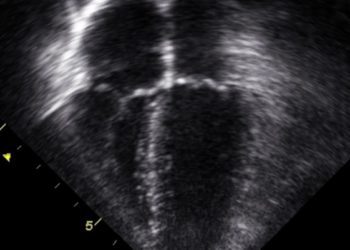Perceived futility of treatments in the ICU dependent on key patient factors
Image: PD
1. Patient age was the strongest predictor for perceived futile care by critical care physicians.
2. Patients admitted to the MICU were most likely to be thought as having received futile treatments.
Study Rundown: The intensive care unit is associated with high cost and due to the severity of illness, physicians may perceive treatments provided there to be futile. This study quantifies the prevalence and cost of critical care at one academic health care center including 5 intensive care units (ICUs). Patients that were perceived by physicians to be receiving futile treatments were more likely to be older and to have been treated in the medical intensive care unit (MICU) transferred from an outpatient facility, long-term acute care (LTAC)/ skilled nursing facility (SNF) or an outside hospital rather than being directly admitted from emergency department. Physicians perceived treatments as being futile most often with the burden of treatment outweighing the benefits received. Of those that were perceived to have futile treatment, 85% died within 6 months of ICU care. This study is novel in that it provides prospective identification of patients perceived to receive futile care and identifies the physician and patient characteristics that are associated. One major weakness of the study is that it fails to include the opinions of other healthcare specialists providing care to the ICU patients and it does not account for the patients’ families’ perspectives. Furthermore, this study elicits opinions from a group of physicians that are directly in contact with the patients they are evaluating. Because these physicians know their hospital course well and presumably can predict their prognosis, this might cause a biased opinion about the futility of treatments.
Click to read the study in JAMA Internal Medicine
Relevant Reading: Medical futility: definition, determination, and disputes in critical care
In-Depth: This study was completed over 3 months and included 6897 assessments of 1125 patients by 36 critical care specialists. Of these patients surveyed, 80% were believed to have never received futile treatments and 11% were thought to be receiving futile treatment. The patients that were thought to be receiving futile treatment had an older median age range (67 vs 63, p 0.007), were more often admitted from SNF/LTAC (10% vs 2%, p <0.001) or transferred from an outside hospital (19% vs 10%, p = 0.003), had a longer duration of hospital stay (15 days vs 8 days, p < 0.001) and more likely admitted to a MICU (37% vs 16%, p <0.001). A multivariate analysis of the factors contributing to futility group assessments found that the strongest predictors were age per decade with a mean probability increasing by 1.6% (95% CI, 0.79% – 2.4%), transfer from a SNF/LTAC with a mean probability 10.64% (CI 05%, 4.61 to 17.38), and number of hospital days with a mean of 1.21% (CI 95%, 0.99 to 1.45). Of those that physicians deamed to receive futile treatment, 85% died within 6 months of ICU admission. The estimated costs for the treatments deemed futile were $2.6 million.
By Camellia Banerjee and Brittany Hasty
More from this author: Increased risk of hospitalization following the release of inmates, Terminology used to describe ductal carcinoma in situ impacts patient preferences, Early onset dementia strongly correlated with alcohol intoxication in men
© 2013 2minutemedicine.com. All rights reserved. No works may be reproduced without expressed written consent from 2minutemedicine.com. Disclaimer: We present factual information directly from peer reviewed medical journals. No post should be construed as medical advice and is not intended as such by the authors, editors, staff or by 2minutemedicine.com. PLEASE SEE A HEALTHCARE PROVIDER IN YOUR AREA IF YOU SEEK MEDICAL ADVICE OF ANY SORT.






